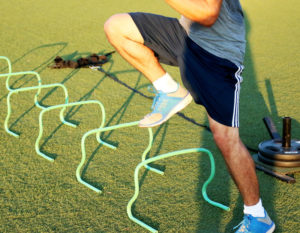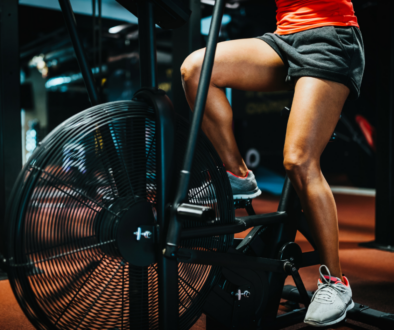What is Fitness? Part 6: Speed, Agility, Quickness
What is Speed, Agility, and Quickness?
Speed is the ability to perform a movement or move in one direction as fast as possible.
Quickness is the ability to react and rapidly accelerate. Quickness means you’re not just fast, you’re also explosive.
Agility is the ability to change directions quickly while in motion. This requires deceleration, stabilization, direction change, and acceleration. Because agility requires quickness and quickness requires speed, the skills overlap. Often you can’t train one skill without training the other. This training is as much mental as it is physical. Many of the adaptations happen in the nervous system: improving the efficiency, recruitment, and synchronization of the neuromuscular system.
Who should train for speed, agility, and quickness?
Athletes who need to react and respond to opponents perform sport-specific S/A/Q drills. If you’ve played football, soccer, or basketball or seen the practices, you’re familiar with the drills. The conventional view is that speed, agility, and quickness are not necessary for general health. Studies show, however, that in older populations, gait speed can be a predictor of mortality and how social you are. While your training might not resemble that of a wide receiver, it’s still important to your health and happiness goals. Even endurance athletes, like marathoners, will benefit from adding speed work to their training program. And for the average gym-goer, adding some S/A/Q training can introduce a fun challenge.
Training for Speed:
- Add intervals to your run or cycling cardio days. If you are new to interval training, start with a 10-second sprint or running up a hill followed by a two-minute recovery.
- Squat or Olympic lift faster. Drop the intensity way down (30-50% of your one rep maximum) and move quickly while maintaining full range of motion and proper technique.
- Perform plyometrics (like box jumps) with a quick rebound.
- Sled push or pull intervals.
Training for Quickness:
- Perform short, explosive drills (10 seconds or less) from a dead stop. This differs from speed training where you can walk or jog between sprints.
- Train your mind by practicing responding and reacting quickly to a signal or cue like a starting gun.
Training for Agility:
- Cone drills
- Ladder drills
- Hurdles
- Reaction ball or mirroring drills with a partner or coach
Now that you know the six components of fitness (cardio, flexibility, strength, balance, power, and S/A/Q), how fit are YOU?
Alicia Cross is a Certified Personal Trainer, Wellness Coach, and Yoga Instructor with more than 15 years’ experience working with clients in classes and one-on-one. She is a yogi, meditator, vegan, and lifter of heavy things. If you’re ready to discover the strength and peace that comes from within, email Alicia@AliciaCrossTraining.com.




